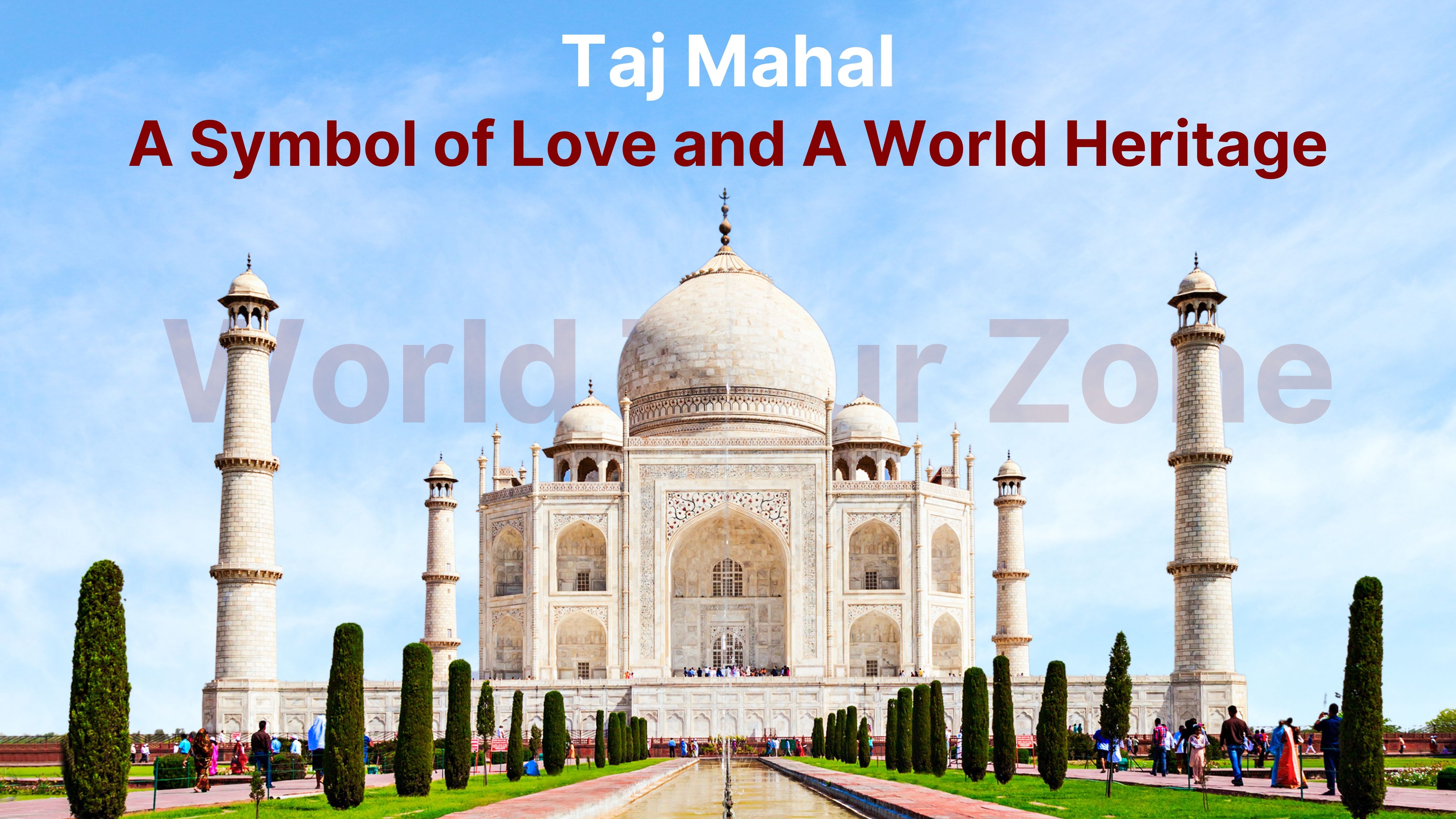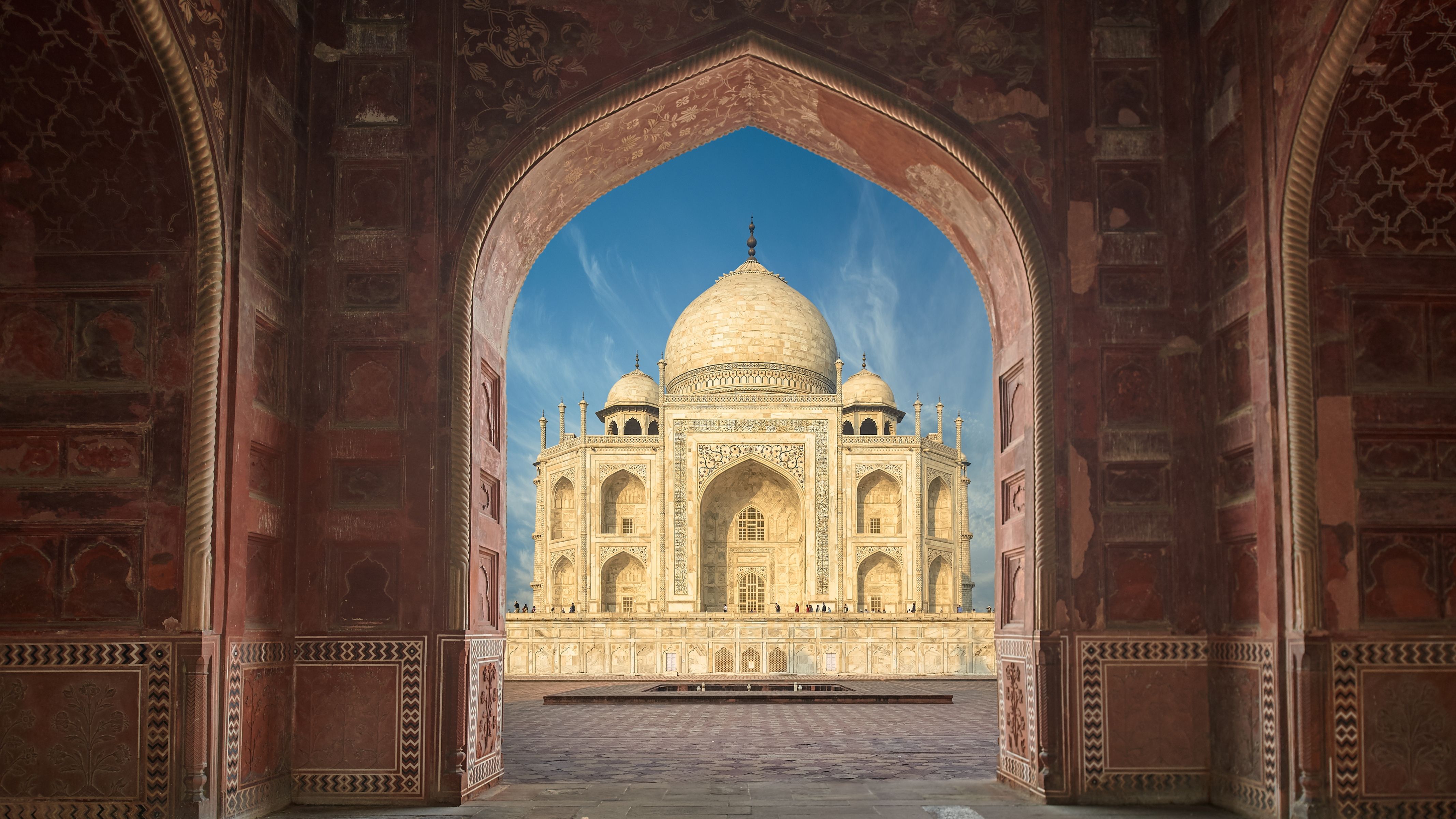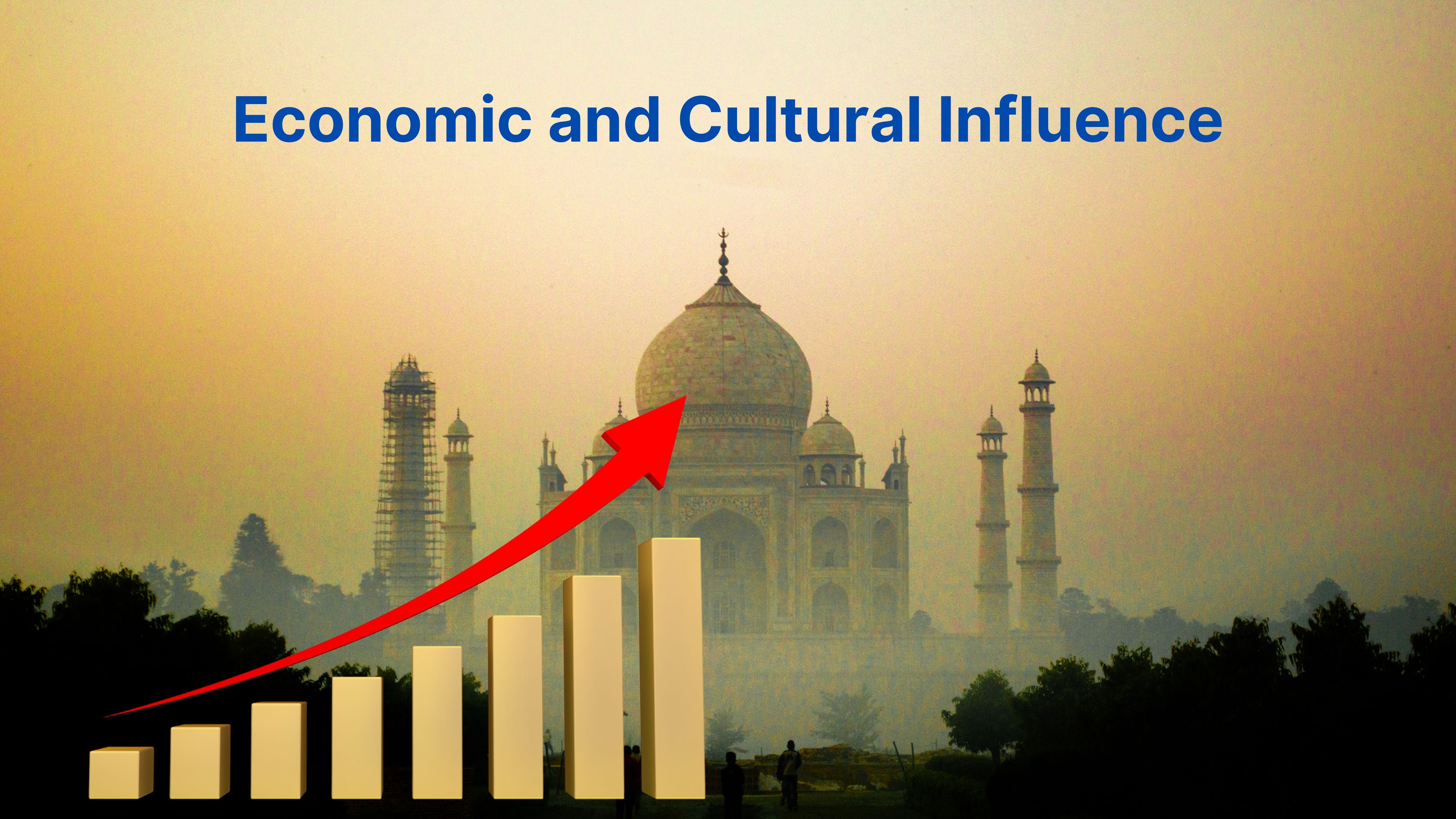The Taj Mahal stands on the banks of the Yamuna in Agra city of Uttar Pradesh, as a significant and prominent historical heritage of India. It is the most refined example of Mughal architecture and is famous in the world for its unique beauty and historical importance. A wonderful mixture of Mughal and Persian styles can be seen in the architecture of Taj Mahal. It is build from white marble, whose art is extraordinary. Its unmatched structure and world-class artwork make it the most famous monument in India.

Mughal emperor Shah Jahan started the construction of this mausoleum in 1932 AD in memory of his beloved wife, Mumtaz Mahal. The builders took about 22 years to complete it in 1953 AD. During this period, about 20,000 skilled workers, craftsmen, and laborers put in immense effort. The Taj Mahal is not just a tomb but a vast complex covering 42 acres (17 hectares). It includes a mosque, a guest house, Charbagh-style gardens, and an entrance gate.
Clay forms its overall structure, with a huge Ghumar and Charminar are the main attractions 1943 In 1989, UNESCO declared the Taj Mahal a World Heritage Site. It is not only a masterpiece of Indian architecture but also an everlasting symbol of love and devotion. Every year millions of tourists visit this wonderful monument, which has become a symbol of India’s rich culture and history.
Construction and history
In the 17th century, the Mughal emperor Shah Jahan built the Taj Mahal in memory of his beloved wife Mumtaj Mahal. After Mumtaj Mahal died in 1631 and Shahjahan built this mausoleum in her memory. The construction began in 1632 and finished in 1638, with around 22000 labourers and architects working on the project.
Architecture and design
Tajmahal is a unique example of Mughal architecture in which there is a blend of Persian, Turkish, Indian, and Islamic architectural elements. Its architectural style features a huge dome and four tall minarets standing on its four sides. The Taj Mahal is white marble further enhances its beauty. The dome and minarets situated on its peak give it a wonderful form.

The premises are special
The Complex of Tajmahal has many parts It is build in
NadiMukhi terrace: The main mausoleum, mosque and Jawab bimar are here.
Charbhag Kshetra: This is a beautiful garden which is built in Persian style.
Jilokhana: This was the residence of the attendants of the tomb, and other multi-mausoleums are also located here.
Tajganj: This was originally a market and a Karva Saraiya for laborers.
Mahadwar: This is the main entrance of Tajmahal which is publicly know as Darwaza-a-Roja
Tourism and Importance
The TajMahal is one of the most popular tourist destinations in India. Every year millions of tourists from all over the world come here to see its beauty. The number of tourists is highest in the months of October, November and February. The Taj Mahal attracts 7 to 8 million visitors every year, out of which more than 0.8 million are foreign tourists. It is a major tourist destination not only in India but in the world. The Taj Mahal is so popular that officials declared it one of the New 7 Wonders of the World in 2007.
The importance of the TajMahal lies in its historical, cultural, and architectural heritage. Many consider it the best example of Mughal architecture and a symbol of India’s rich history.. Its austere beauty, intricate carvings, and the story of love make it world famous. The Taj Mahal is not only a tourist destination but it is also a symbol of Indian culture and tomorrow. People considered it a symbol of Islamic heritage in India and it has become a global representation of India’s identity. Because of its importance, the Government of India makes special efforts for its conservation and protection so that future generations can also enjoy this wonderful heritage.
Economic and Cultural Influence of Taj Mahal

The Taj Mahal is not only a historical monument but also an important pillar of the economy of Agra and India. Through foreign industries, the Taj Mahal employs local people and promotes local business. Apart from this, the Taj Mahal is an important symbol of Indian culture and history, which reflects the prosperity and heritage of the country. It not only increases tourism but also encourages the local handicraft industry, especially marble carving and traditional craftsmanship. The global popularity of the Taj Mahal has significantly boosted the economy of Agra, which has benefited the hotel industry, family service, and even local industry businesses. Apart from this, the cultural significance of the Taj Mahal has inspired art, literature, and cinema, which has led to the global spread of Indian culture.
Visiting and Entry Fee

For visiting The Taj Mahal, tourists are allowed from 6:00 am to 6:00 pm and have to pay a fixed entry fee. For Indian citizens, the entry fee is usually lower, whereas for foreign citizens, it is higher. Currently, Indian citizens pay approximately ₹50, while foreign citizens pay approximately ₹1100. This fee can change from time to time, so for the latest information, visit the official website or any other thing. also.
Taj Mahal’s official website: www.tajmahal.gov.in
Yatra ticket booking website: www.tajmahal.gov.in/ticket
Yatra guide website: www.tajmahal.gov.in/guide
Camera website: www.tajmahal.gov.in/camera
Environmental Challenges
Many environmental challenges are being faced to maintain the beauty of the Taj Mahal. As a result of air pollution and industrial activities, there is a danger of a change in the color of the white marble of the Taj Mahal. Many steps have been taken to deal with this problem.
1. The Taj Trapezium Zone (TTZ) Authority has decided to make 500 acres of area around the Taj Mahal pollution-free.
2. Authorities have banned Petrol and diesel vehicles within 500 meters of the Taj Mahal.
3. The government plans to convert Agra into a city dependent on biofuel.
4. Officials are implementing Special measures to reduce the pollution of the Yamuna River, as it significantly affects the Taj Mahal’s color.
5. Authorities have introduced plans for afforestation, solid waste management, and the development of a 35 km long garden along the Yamuna River.
6. The government has adopted a policy to shut down hazardous industrial units and allow only those that comply with pollution standards.
7. Environment agencies are actively monitoring and controlling air quality around the Taj Mahal.
Despite the efforts, the Taj Mahal is still not completely free from the threat of pollution. In recent times, poisonous smoke and soot have often covered the Taj Mahal, highlighting the serious air pollution in this area. Therefore, authorities must take continuous action and enforce strict environmental regulations to protect it
Conclusion
The Taj Mahal is not only a historical monument but also a living symbol of love. Its architectural beauty and historical significance make it one of the wonders of the world. Every year, millions of tourists visit it and enjoy its beauty. Continuous efforts are being made to maintain and protect the Taj Mahal so that it remains safe for future generations too. Visiting the Taj Mahal is an Aditya experience that not only gives you historical knowledge but also gives you a glimpse of such beauty. Experience comes in vain that cannot be expressed in words. This is the only place that reminds you of love, dedication, and the amazing ability of human creation.
For more information, Contact us


